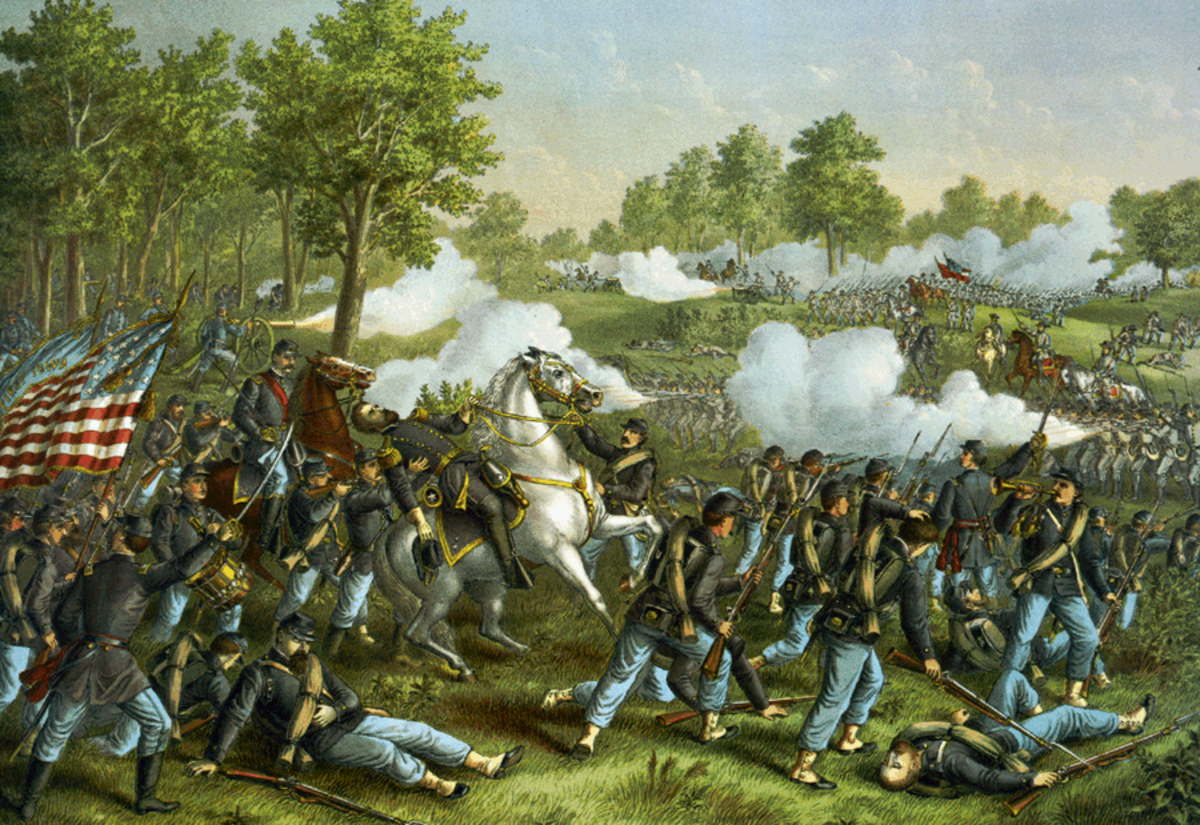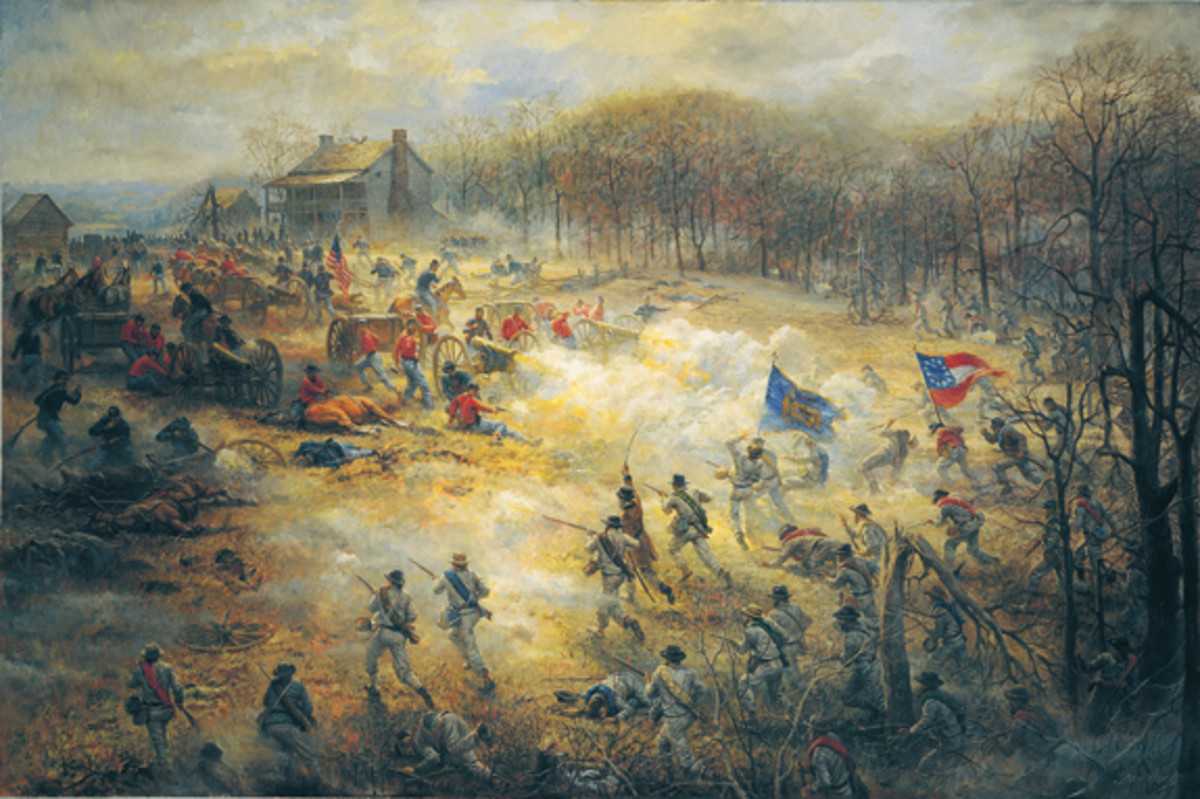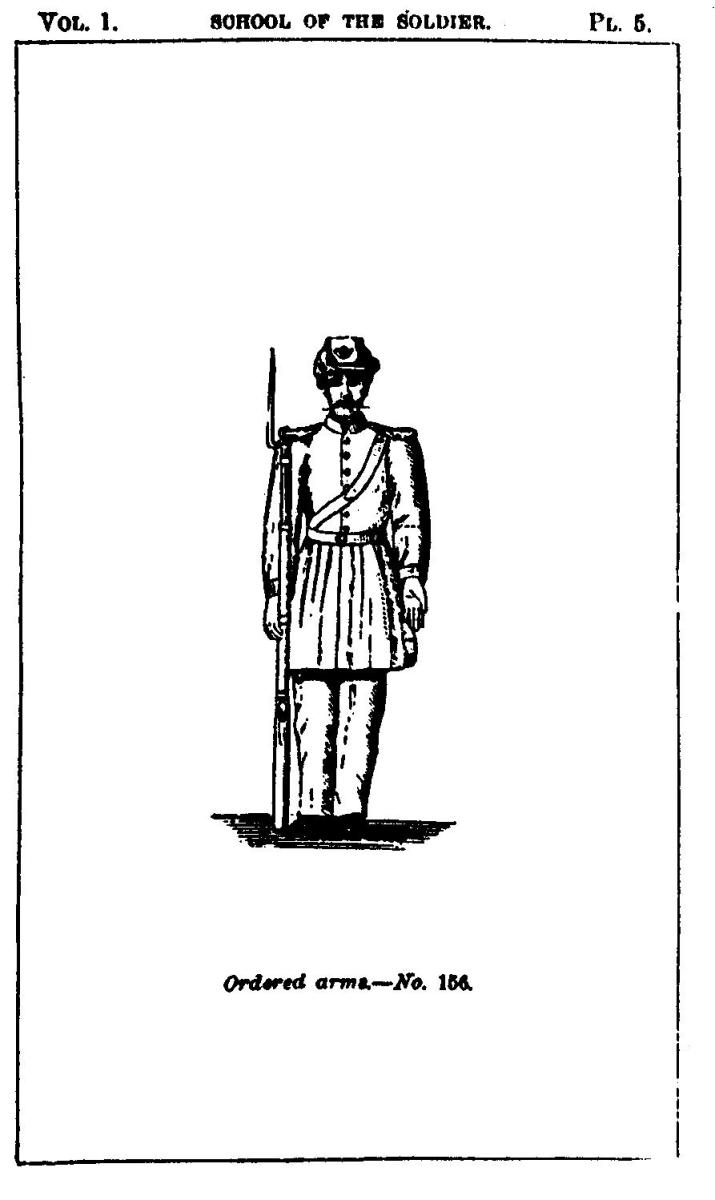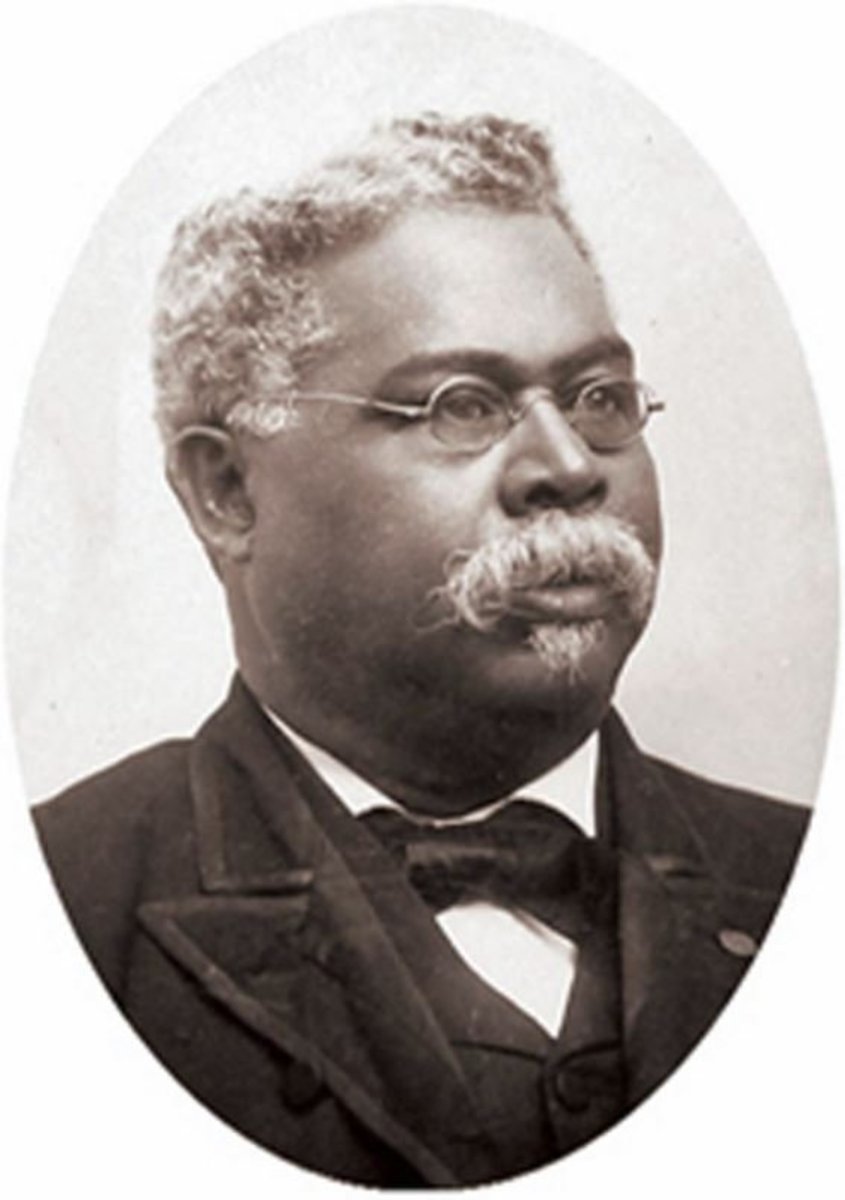- HubPages»
- Education and Science»
- History & Archaeology»
- History of the Americas»
- American History
Franz Sigel: Leadership Crisis after Wilson's Creek
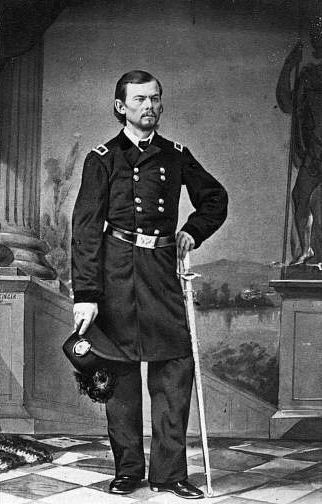
On August 10, 1861, the first major battle of the Civil War west of the Mississippi took place in southwest Missouri near Springfield by a small branch called Wilson's Creek. The Union army, under the command of Brigadier General Nathaniel Lyon, had been in pursuit of exiled Missouri governor Claiborne Fox Jackson and the Missouri Militia under the command of C.S.A. Major General Sterling Price.
During the battle, BG Lyon was killed and the other arm of the Union army, led by Col. Franz Sigel, had been completely routed south of Skeggs Branch by the 3rd Louisiana C.S.A. which Sigel and his men mistook for the 3rd Iowa U.S. Sigel and his men fled the battlefield, MG Thomas Sweeney was injured which left Major Samuel D. Sturgis the highest ranking officer to assume command.
As the Union Army retreated back towards Springfield Sigel assumed command of the Army from Maj. Sturgis. On the retreat route back to Rolla, MO. Sigel had delayed in getting his brigade prepared in time to move out early and his men caused many delays to stop and make themselves breakfast, causing even further delays. It was at this point that the other officers forced Col. Sigel to turn command back over to Maj. Sturgis. [2]
Questions and doubts arose after the loss at Wilson's Creek. Questions about the battle plan, whose plan that was, leadership ability, cowardice, blame and confusion. As with every story there are always two sides. The story of the aftermath of Wilson's Creek and the question of Col. Sigel's leadership certainly has many sides. There is obviously the viewpoint of Col. Sigel himself, the portrayal of him in the media, the viewpoint of his fellow officers and historical hindsight.
What is presented here is by no means a complete and total synopsis and account of these viewpoints. What is presented is primary source viewpoints taken from the Official Records of the Union and Confederate Armies of the individuals involved and their perception along with some historical perspective.
The basis of the events has been presented previously. A brief overview of Sigel himself is in order. Franz Sigel was a German immigrant who graduated from the Karlsruhe Military Academy in 1843. By 1849, he had become Secretary of War and commander-in-chief of the revolutionary republican government of Baden. He immigrated to the United States in 1852 and became a teacher, eventually teaching in St. Louis Missouri and was a leader of the Missouri German immigrant community. At the outbreak of the Civil War he was commissioned Colonel of the 3rd Missouri Infantry and fought a losing fight at The Battle of Carthage in 1861. This brings him to Wilson's Creek. [1]
On August 12th, 1861 after the Battle of Wilson's Creek, Sigel wrote to his commander, Major General John C. Fremont, of the status of the Union army after the battle, his assuming command after the death of BG Lyon, and his desperate need for reinforcements (a call that Lyon's had issued to Fremont that went ignored, preempting Lyon to make the attack at Wilson's Creek) in the wake of their defeat. On August 18th, near Rolla, MO. is where Sigel again writes to Fremont to defend his actions at Wilson's Creek as well as during the retreat. It is clear that Sigel is attempting to reiterate to his superior officer the confusion of war and how that affected his decisions. When explaining the confusion of mistaking the Louisiana regiment for the Iowa regiment, Sigel writes,
"It is impossible for me to describe the consternation and frightful confusion which was occasioned by this unfortunate event. The cry 'They (Lyon's troops) are firing against us,' spread like wildfire through our ranks; the artillerymen, ordered to here and directed by myself, could hardly be brought forward to serve their pieces; the infantry would not level their arms till it was too late." [4]
He then goes on the explain his reasoning for what he believes to be the cause of not only their fate at Wilson's Creek but as for the retreat itself. Four of his five reasons all hinge on the fact that the regiment consisted mostly of volunteers, three-month enlistees, poor training and the fact that two-thirds of the officers had left them, again, because of the three-month service system. His delays, however, are only addressed as being cause by the time it would take to cross the various rivers (the Gasconade, Roubidoux, Little and Big Piney Rivers). [4]
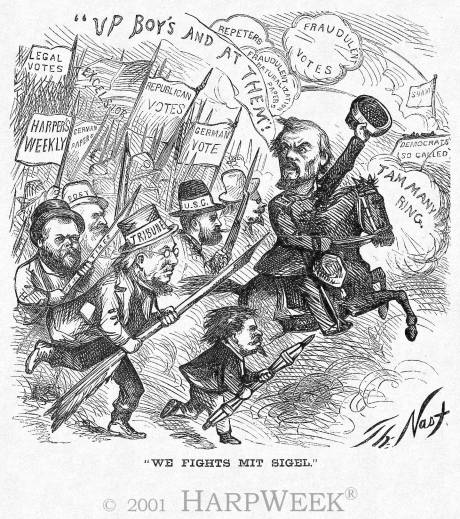
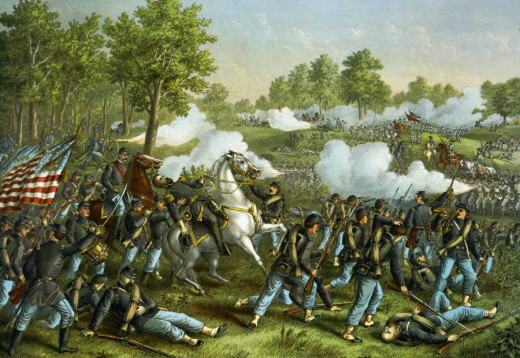
Then there is the portrayal of Sigel in the media of the era. Sigel was highly admired by the German immigrants of the time and many would go to "fights mit Sigel" out of admiration for their fellow German countryman. With his plumed hat waving and racing through the battle on horseback, he was portrayed in the Union media as this heroic figure of Prussian honor. But in the North, the gallant image of Sigel was a driving force in recruiting more German immigrants to the battle. [1]
Finally, the real issue after Wilson's Creek was the perception of the other officers of Sigel's leadership ability. In an official communication on February 18, 1862 to Major General Henry W. Halleck (who had a dislike for Sigel) and subsequently to Major General George McClellan, Brigadier General John M. Schofield submitted his reasons for finding newly promoted BG Franz Sigel unfit for the rank he was now holding. Their reasoning was that firstly, Sigel had superior resources as to that of the Confederates at Carthage, and that,
"Price had about twice Sigel's number of men, but most of them mounted, armed with shot-guns and common rifles, and entirely without organization and discipline, and few pieces of almost worthless artillery. Sigel retreated all day before this miserable rabble, contenting himself with repelling their irregular attacks, which he did with perfect ease whenever they ventured to make them." [3]
Secondly, their complaint was that prior to the August 10th engagement at Wilson's Creek, General Lyon, outnumbered, decided to attack and that,
"The plan of attack was freely discussed between General Lyon, the members of his staff, Colonel Sigel, and several officers of the Regular Army. Colonel Sigel, apparently anxious for a separate command, advocated the plan of a divided attack. All others, I believe, opposed it." [3]
It is then claimed that Sigel "fled alone" to Springfield arriving long before the battle had ended and had little to no casualties and that no attempt was made by Sigel to rally his men in defense of Lyon's division. Schofield also claimed that Sigel was asleep in his bed at the hour appointed to for the troops to begin their retreat and throughout the retreat, his men, without any admonishment from their superior officer, dawdled, cooked breakfast, and made little more than ordinary day's marches.
In the communique, however, Schofield does admit that,
"General Sigel, in point of theoretical education, is far above the average of commanders in this country. He has studied with great care the science of strategy, and seems thoroughly conversant with the campaigns of all the great captains, so far as covers their main strategic features, and also seems familiar with the duties of the staff." [3]
But he then goes on to state that, "but in tactics, great and small logistic, and discipline he is greatly deficient." [3]
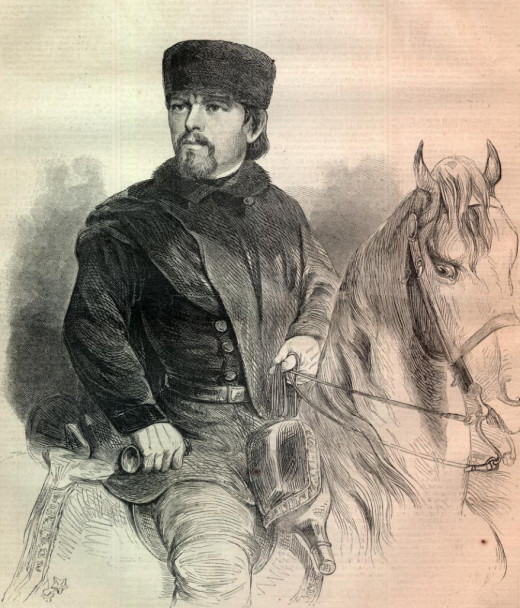
The day before, many of the officers that were involved in the battle at Wilson's Creek, submitted another letter to MG Halleck, jointly supporting BG Schofields assessment of Sigel and adding some additional supporting facts to the case against him. These men, Major John V. Du Boise, LTC James Totten, ADC to General Lyon, G. Granger, acting Surgeon General Florence M. Corney, Major W.L. Lothrop, Captain P.E. Burke, 1LT George O. Sokalski, LT John L. Woods Jr. and 1LT Lucien J. Barness, submitted what they believed to be "erroneous accounts of the part taken by General Sigel" in the battle of Wilson's Creek that have led to "wrong impressions upon the minds of the people, and deceived the administration in regard to the merits of the case." They again claim that Sigel and Colonel Salomen abandoned their commands, could have rallied to the aid of General Lyon, but claimed they were "more solicitous about their own personal safety than that of their companions in arms or the reputation of the flag." They also claimed, again corroborating Schofields remarks, that Sigels men delayed for breakfast and generally caused issues with the retreat. On the third day, the officers having become disgusted with Sigel's lack of leadership, insisted that Major Sturgis again assume command, which Sigel yielded to. [1]
There is no doubt that Sigel had the military experience and heritage, but his battlefield contributions were minimal and he had more failures than successes. His success at Pea Ridge Arkansas would be the highlight of his US military career, and after his losses in the east against an outnumbered Southern army, led by Thomas J. "Stonewall" Jackson in the Shenandoah Valley where he was wounded in the hand, and a number of defeats in 1864, Sigel was relieved of command and spent the rest of the war without an active command. [1]
His actions prior, during and after the Battle of Wilson's Creek are suspect. However, it would be impossible to determine the mind of General Sigel in this day and age. Was he just a General doing what he thought best? Did he have ulterior motives in trying to further his career? Was he a coward or a victim of circumstance and the fog of war? Questions such as these still remain, but what appears clear is that while it is no doubt Franz Sigel rose to the occasion to support his new country, he either never fully fulfilled his potential or he indeed was unfit for the leadership role he found himself in.
Sources:
[1] Neely, M.E., Holzer, H. The Union Image: Popular Prints of the Civil War North. University of North Carolina Press, 2000.
[2] Piston, William Garrett, Hatcher, Richard W. III, Wilson's Creek: The Second Battle of the Civil War and the Men Who Fought It, University of North Carolina Press, 2004.
[3] United States Congress. "OFFICIAL RECORDS: Series 1, vol 3, Part 1 (Wilson's Creek Campaign) OPERATIONS IN MO., ARK., KANS., AND IND. T. Chapter X." Official Records of the Union and Confederate A
rmies, 1861: 93 - 98.
[4] United States Congress. "Reports of Col. Franz Sigel, Third Missouri Infantry, commanding Army of the West--Battle of Oak Hills, Springfield, or Wilson's Creek, Mo." Armies, Official Records of the Union and Confederate, August 1861: Series 1, Vol. 3, Section 3.


